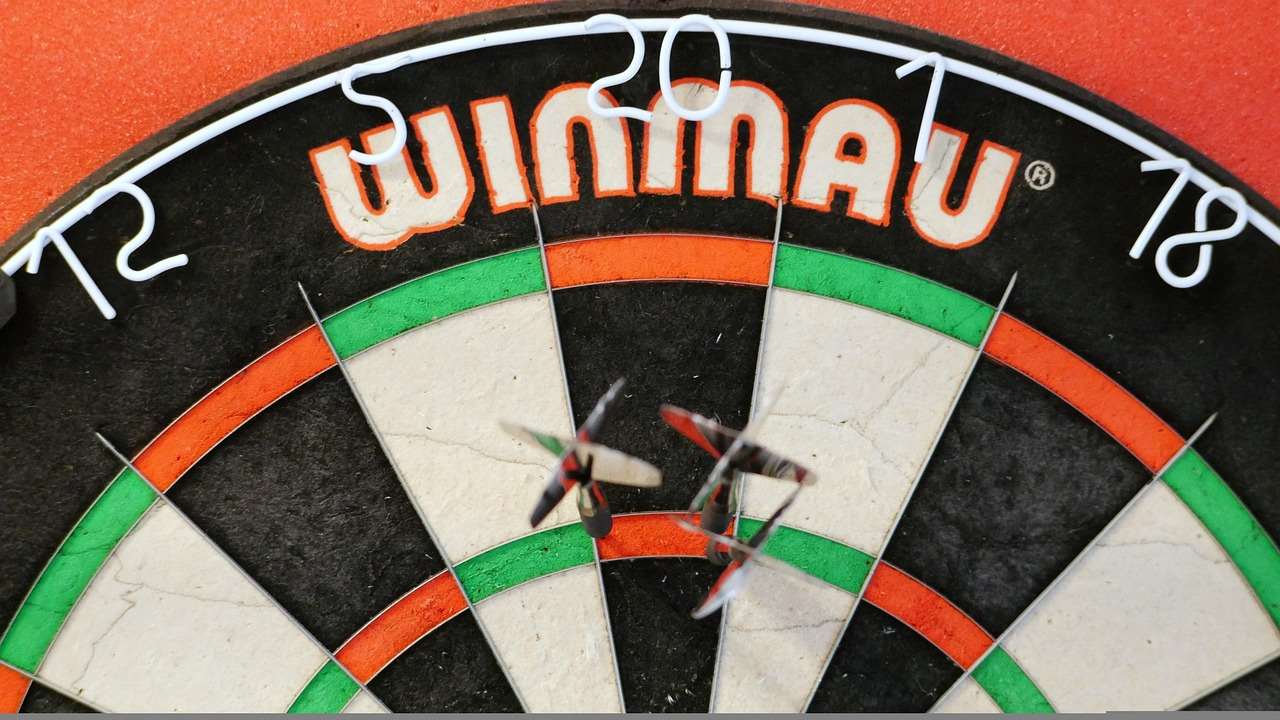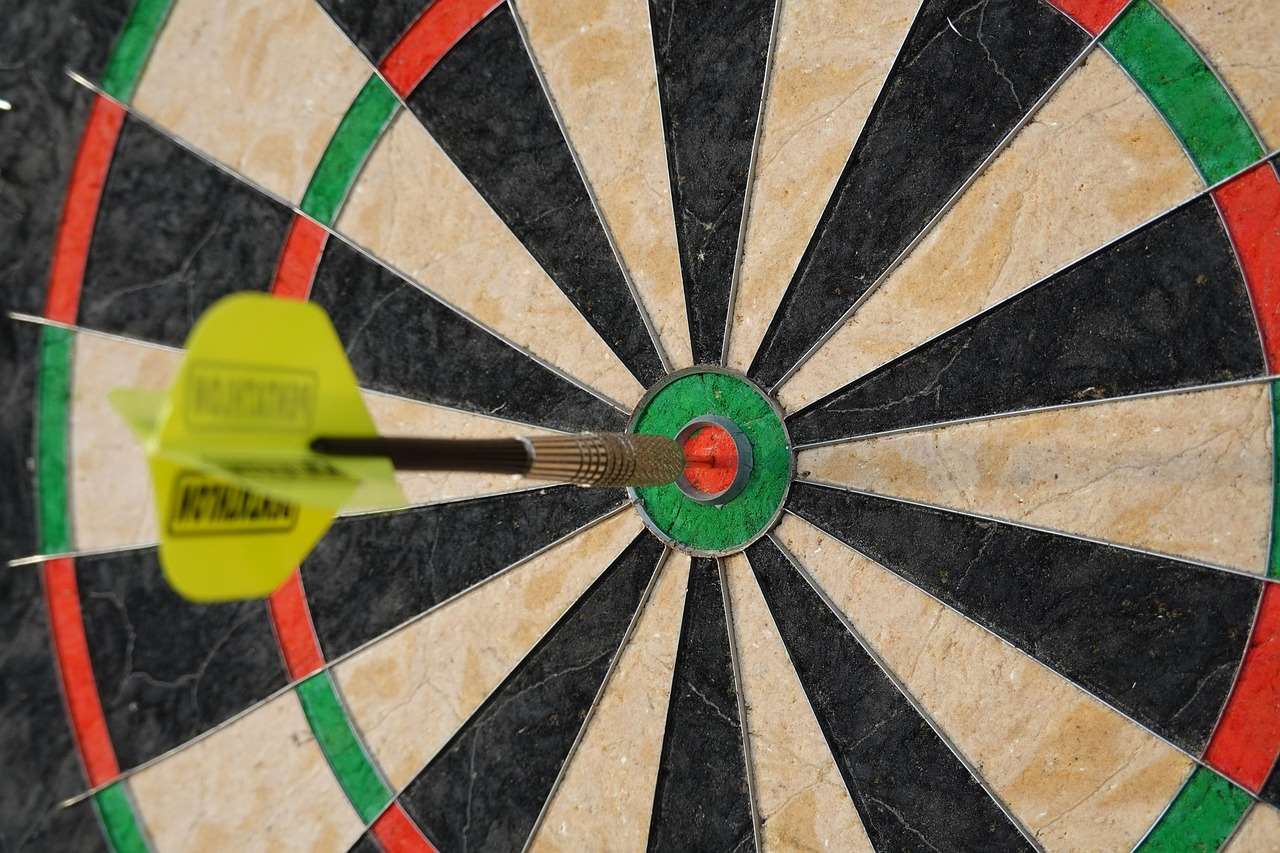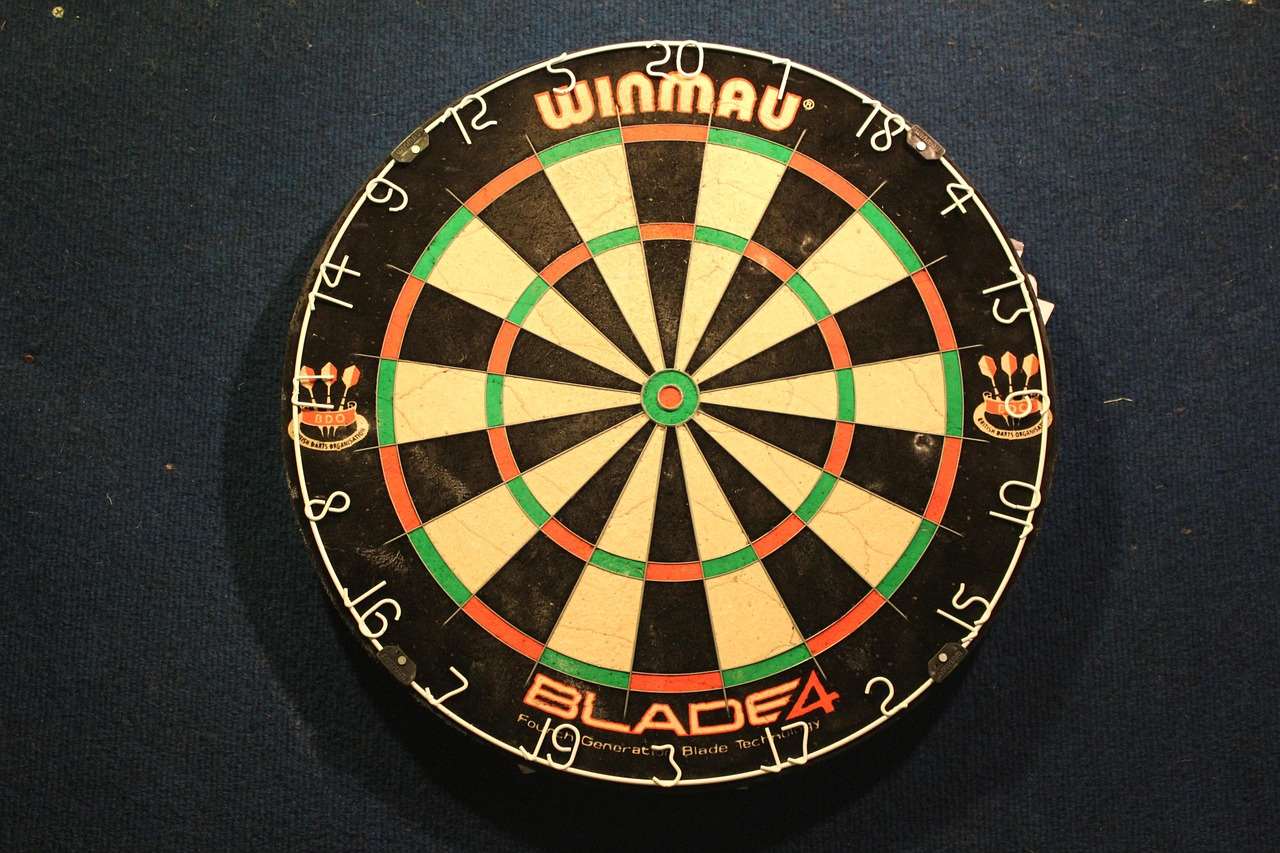Want to consistently hit those crucial doubles in darts? The solution is simpler (and more fun) than endless repetition: Games improve double hitting darts by adding pressure, focus, and varied practice. This article will explore specific dart games designed to sharpen your double-hitting accuracy, discuss the mental aspects of hitting doubles, and offer practical tips to elevate your game.
⚠️ Still Using Pen & Paper (or a Chalkboard)?! ⚠️
Step into the future! The Dart Counter App handles all the scoring, suggests checkouts, and tracks your stats automatically. It's easier than you think!
Try the Smart Dart Counter App FREE!Ready for an upgrade? Click above!
Why Games Improve Your Double Hitting Darts Skills
Many dart players fall into the trap of practicing the same routines, often without any real pressure. Simply throwing darts at the double 20 over and over won’t necessarily translate to success in a match. Games inject realism and motivation into your practice, forcing you to perform under simulated match conditions. This simulated pressure enhances concentration and decision-making skills, both vital for hitting those clutch doubles.
Furthermore, different games emphasize different doubles. You might be comfortable hitting double 20, but what about double 3, double 11, or double 16? By playing various games, you’ll be forced to expand your repertoire and become proficient at hitting a wider range of doubles. This versatility is essential for competitive play.

Specific Dart Games for Double Practice
Here are some effective dart games that directly target your double-hitting abilities:
- Around the Clock (Doubles): This classic game focuses specifically on hitting each double from 1 to 20 in sequence. It’s a great way to identify your weak spots and work on those less-favored doubles. If you miss a double, you stay on that number until you hit it. This forces you to face the pressure of hitting that specific double repeatedly.
- Killer (Doubles): Each player chooses a double as their “number.” Players then take turns trying to hit their own double to become the “killer.” Once a player is a killer, they try to hit other players’ doubles to eliminate them. This game promotes accuracy and strategic thinking, particularly in choosing your target double and deciding when to attack. The added pressure of being targeted enhances focus and concentration.
- Double Trouble: A simpler game where the objective is to be the first to hit a pre-determined number of doubles (e.g., 5 or 10). You can make this game even more challenging by specifying *which* doubles must be hit. For example, you could require two hits on double 20, one on double 16, one on double 10, and one on double 5.
- Shanghai (Doubles): Similar to the regular Shanghai game, but with a focus on doubles. Each round focuses on a specific number (1-20). Players aim to score as many points as possible by hitting the single, double, and triple of that number in three darts. Landing the double provides a significant points boost and is crucial for winning.
You can also use the basic game of 501. If you are adapting darts rules for beginners, this can be a great tool. Take the time to learn Basic Darts Fundamentals for Beginners.
Remember to adjust the difficulty of these games based on your skill level. You might start with fewer doubles in Double Trouble or shorten the “Around the Clock” game. The key is to challenge yourself without becoming discouraged. Consistent practice is essential for improvement.
The Mental Game of Hitting Doubles
Hitting doubles is as much a mental challenge as it is a physical one. Many players crumble under the pressure of having to hit a double to win a leg or a match. Here are some strategies to improve your mental game:
- Visualization: Before your turn, visualize yourself throwing the dart and hitting the double. See the dart leaving your hand, flying through the air, and landing precisely where you want it to go. This helps build confidence and reduces anxiety.
- Positive Self-Talk: Replace negative thoughts (“I’m going to miss this”) with positive affirmations (“I can do this”). Believe in your ability to hit the double, even if you’ve missed it before.
- Breathing Exercises: Take a few deep breaths before throwing to calm your nerves and focus your mind. Slow, deliberate breathing can help reduce anxiety and improve concentration.
- Embrace the Pressure: Instead of trying to avoid the pressure, accept it as part of the game. View the pressure as an opportunity to prove your skill and resilience. Understand modifying rules for mixed-level dart players is also important.
- Develop a Pre-Throw Routine: This helps to calm nerves, slow the game down, and allow for concentration to take over. Find what works for you and stick with it.

Practicing Under Pressure: Simulating Match Conditions
To truly improve your double-hitting under pressure, it’s crucial to simulate match conditions during your practice sessions. Here are some ways to do this:
- Play Against Opponents: The best way to simulate pressure is to play against other dart players, especially those who are slightly better than you. The competitive element will naturally increase the pressure.
- Set Goals and Rewards: Create realistic goals for your practice sessions and reward yourself when you achieve them. This helps maintain motivation and creates a sense of accomplishment.
- Introduce Penalties: Implement penalties for missing doubles, such as doing push-ups or running a lap. This adds an element of consequence to your practice and forces you to focus more intently.
- Play “Ghost” Games: Play against an imaginary opponent, setting targets for each leg and treating it as a real match. This allows you to practice under pressure even when you’re alone.
Fine-Tuning Your Darts Technique for Doubles
While games improve double hitting darts by enhancing mental fortitude and providing varied practice, solid technique is essential. Re-evaluate your grip, stance, and throw to ensure consistency and accuracy.
Here are some key aspects to consider:
- Grip: Find a grip that feels comfortable and secure. Experiment with different grips to see what works best for you. A consistent grip is crucial for accurate throws.
- Stance: Maintain a stable and balanced stance. Your weight should be evenly distributed, and your body should be aligned towards the target.
- Throw: Use a smooth, controlled throwing motion. Avoid jerking or snapping your wrist. Follow through completely with your arm and hand.
- Follow Through: Following through ensures that the dart is released at the correct angle and with the correct amount of force.
Consider using video recordings to analyze your technique and identify areas for improvement. Even small adjustments can make a significant difference in your accuracy.

Choosing the Right Darts Equipment for Double Hitting
The right darts equipment can also play a role in your double-hitting success. Experiment with different barrel weights, shaft lengths, and flight shapes to find what works best for your throwing style. A dart that feels comfortable and balanced in your hand will promote consistency and accuracy. This is particularly important when playing fun dart game variations with modified rules.
- Barrel Weight: Heavier barrels tend to be more stable in the air, while lighter barrels offer more control. Experiment to find the weight that suits your throwing style.
- Shaft Length: Shorter shafts can improve accuracy, while longer shafts can provide more stability.
- Flight Shape: Different flight shapes affect the dart’s trajectory and stability. Standard flights are a good starting point, but experiment with other shapes to see what works best for you.
Don’t be afraid to experiment and try different combinations of equipment until you find what feels right. The goal is to find equipment that enhances your natural throwing style and promotes consistency.
Tracking Your Progress and Analyzing Your Data
To truly maximize the benefits of practice, it’s important to track your progress and analyze your data. Keep a record of your scores, double-hitting percentages, and any other relevant statistics. This will help you identify areas where you’re improving and areas where you need to focus your attention.
Use a notebook, spreadsheet, or darts scoring app to track your progress. Analyze your data regularly to identify patterns and trends. For example, you might notice that you consistently struggle with a particular double, or that your accuracy declines when you’re under pressure.
By tracking your progress and analyzing your data, you can tailor your practice sessions to address your specific weaknesses and maximize your improvement. Be sure to also check out Adapting darts rules for small spaces: tips and tricks.

Advanced Double Hitting Strategies
Once you’ve mastered the basics, you can start to explore more advanced strategies for hitting doubles. These strategies involve a combination of mental focus, strategic thinking, and precise execution.
- The “Setup” Shot: Instead of always aiming directly for the double, consider using a setup shot to leave yourself a more favorable angle or position for your next dart. For example, you might aim for the single 20 to leave yourself a clear shot at double 20.
- The “Blocker” Shot: If your opponent is close to finishing, consider using a blocker shot to prevent them from hitting their double. This might involve aiming for the single of their required double to block their path.
- Target Selection Based on Score: Always consider your remaining score and the available doubles when choosing your target. Sometimes, a seemingly unconventional double is the best option based on the situation.
Mastering these advanced strategies requires practice, patience, and a deep understanding of the game. By combining these strategies with solid technique and mental fortitude, you can significantly improve your double-hitting accuracy and become a more formidable opponent.
Staying Motivated and Avoiding Burnout
Improving your double-hitting skills takes time and effort. It’s important to stay motivated and avoid burnout by setting realistic goals, varying your practice routines, and celebrating your successes. And also remember how to make darts fairer with handicap rules
- Set Realistic Goals: Don’t expect to become a double-hitting master overnight. Set small, achievable goals for each practice session and celebrate your progress along the way.
- Vary Your Practice Routines: Avoid monotony by mixing up your practice routines. Try different games, drills, and exercises to keep things fresh and engaging.
- Take Breaks When Needed: If you’re feeling tired or frustrated, take a break. Pushing yourself too hard can lead to burnout and hinder your progress.
- Celebrate Your Successes: Acknowledge and celebrate your successes, no matter how small. This will help you stay motivated and maintain a positive attitude.

Conclusion: Elevate Your Dart Game Through Strategic Practice
Games improve double hitting darts by injecting pressure, variety, and strategic thinking into your practice sessions. By incorporating the games and techniques discussed in this article, you can significantly enhance your double-hitting accuracy, improve your mental game, and become a more competitive dart player. Remember to focus on technique, mental fortitude, and strategic thinking, and always track your progress to identify areas for improvement. Now, pick up your darts, start playing, and watch your double-hitting skills soar!
Ready to put these tips into action? Find a local darts league or challenge a friend to a game of “Around the Clock (Doubles)” and experience the benefits of game-based practice firsthand.
Hi, I’m Dieter, and I created Dartcounter (Dartcounterapp.com). My motivation wasn’t being a darts expert – quite the opposite! When I first started playing, I loved the game but found keeping accurate scores and tracking stats difficult and distracting.
I figured I couldn’t be the only one struggling with this. So, I decided to build a solution: an easy-to-use application that everyone, no matter their experience level, could use to manage scoring effortlessly.
My goal for Dartcounter was simple: let the app handle the numbers – the scoring, the averages, the stats, even checkout suggestions – so players could focus purely on their throw and enjoying the game. It began as a way to solve my own beginner’s problem, and I’m thrilled it has grown into a helpful tool for the wider darts community.